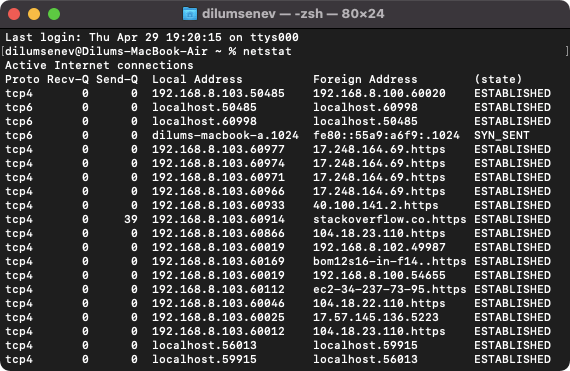

NOTE: If you wish to perform system administration as the root user, you must first enable the root user using the Directory Utility app (in /System/Library/CoreServices/Applications).
BASH control structures and functions may be used to create BASH shell scripts. Wildcard metacharacters may be used with commands, and regular expressions may be used within text utilities. Ctrl+C cancels a command by sending a SIGINT kill signal to the foreground process. The ~ metacharacter represents the user’s home directories. Single quotes protect all special shell characters, double quotes protect most shell characters (variables are one exception), backquotes perform command substitution ( echo The date is `date`) and backslash protects the next character ( echo You owe \$4.50). The Standard Output and Standard Error of a command may be redirected to a file ( ls –l /Users > usersfile 2> errorfile). The Standard Output of one command may be sent to the Standard Input of another command using a pipe ( | ) symbol ( ps aux | less). Commands may be chained using semicolons ( date who). The help command displays BASH function help ( help echo). The manual pages ( man who) and the info pages ( info who) list most command documentation. Regular options ( -h) and POSIX options ( -help) are listed for most commands. It’s also important to note that the same syntax rules that you used on Linux apply to BASH on macOS: Instead, you can use the Terminal app ( /Applications/Utilities/Terminal) to obtain a command line terminal and BASH shell.Īlternatively, you can type >console as the username at the macOS login prompt (no password needed) to obtain a login prompt that allows you to log directly into a command line terminal and obtain a BASH shell.Īfter you obtain a BASH shell, you can run many of the same commands you’ve become accustomed to on Linux. But unlike Linux, macOS does not support virtual terminals by default. 
 Applying Your Linux+ Skills to macOS: Devices and System InitializationĪs you now know from my introductory article, macOS is a flavor of UNIX, similar to Linux. Applying Your Linux Skills to macOS: Understanding Apps. Applying Your Linux Skills to macOS: An Introduction. Check out the other articles in the series: This article is part two in a series about using Linux skills when working in a mac operating system.
Applying Your Linux+ Skills to macOS: Devices and System InitializationĪs you now know from my introductory article, macOS is a flavor of UNIX, similar to Linux. Applying Your Linux Skills to macOS: Understanding Apps. Applying Your Linux Skills to macOS: An Introduction. Check out the other articles in the series: This article is part two in a series about using Linux skills when working in a mac operating system.










